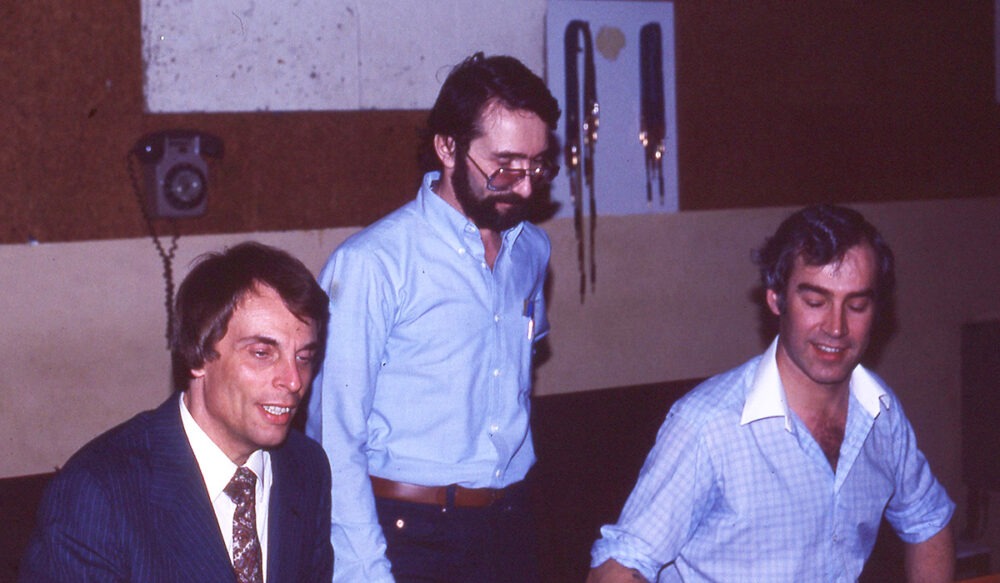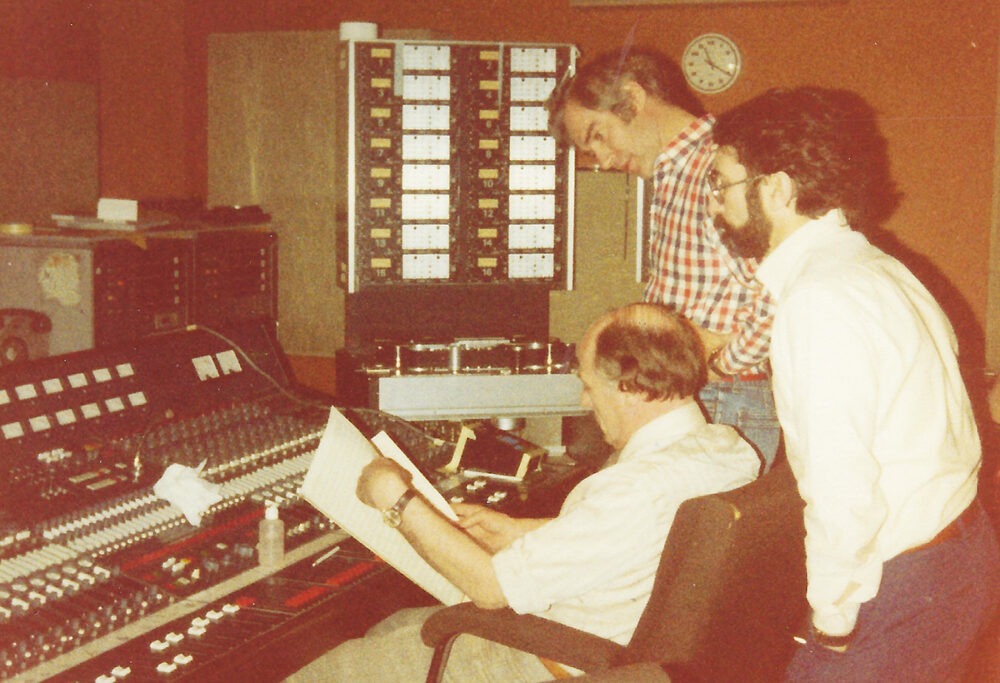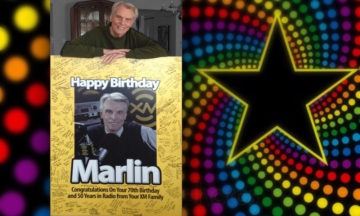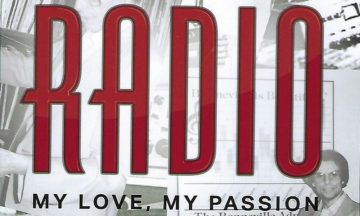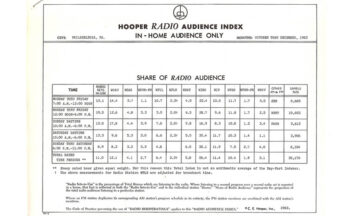Even though the photos and stories in this chapter have nothing to do with Christmas, since we are in the heart of the holiday season, I thought I’d begin with these two images which denote the time of year better than most any other.
The main photo above is a view inside the Conservatory at Longwood Gardens, one of the nation’s premier botanical gardens, situated several miles southwest of Philadelphia along U. S. Route One. To the right is a unique-looking poinsettia — have you ever seen one with this coloration? I haven’t. This one was purchased at Rice’s Greenhouses, located in Bucks County, Pennsylvania. It was just one of a great variety of colors — including bright yellow leaves — growing in their numerous greenhouses, which makes me wonder why do we rarely see any beyond the standard red plus maybe one with white leaves.
1960’s Night Jock
This is a photo which I was sure existed, but it’s been missing for at least 30 years … until about two weeks ago when I came across an envelope of about 20 pictures which was buried in the back of a drawer that’s seldom opened. It is a photo I really wanted to include in my memoir, along with another which surfaced a couple of months ago. You’ll find that one at the bottom of this Musings.
This photo is of yours truly in the early part of 1960, and as I write about in the book, in the control room for KOLD at 1425 on the dial at Thule Air Force Base, Greenland … I am the “night jock” doing my Cousin Ray and the Platter Parade show.
1970’s Radio Station Automation
Next, we jump 11 years ahead to 1971 and I’m in KBIG in Los Angeles, having just launched my programming on WRFM’s sister station. As I also write about, this is the largest radio station automation system I have ever seen.

If you are at all familiar with reels of audiotape, you’ll note that the reels loaded here are small, only 7″ and holding two quarter-hours of our musical programming. This is how we began our service to stations in late 1970. By 1976, we realized two facts … First, while the audio quality on our tapes was never poor, there was an opportunity to improve it and ensure that what was being transmitted by our client stations was absolutely the best quality possible which could be delivered to their listener’s speakers. Secondly, while replacing all of the reels, it would truly benefit the stations if we were able to satisfactorily do so on 10-1/2″ reels, double the amount per reel, an hour’s worth of music. However, playing each reel through from beginning to end was out of the question, as it wouldn’t take long for there to be evidence of repetition. After a couple of brainstorming sessions, we devised a unique interlacing structure that was easy for us to schedule and the stations’ automation systems to handle.
Schulke Radio Productions (SRP)
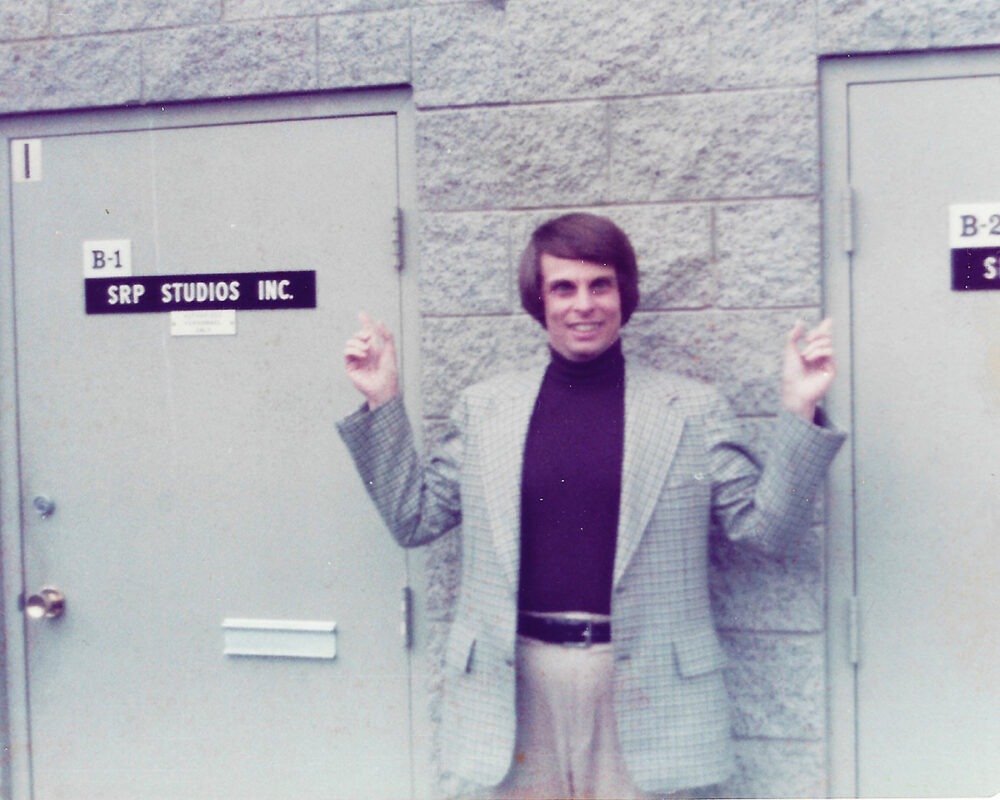
Our major competitor in Beautiful Music/Easy Listening format programming services was Schulke Radio Productions (SRP), which had begun operations a couple of years earlier. Their early offices and creative functions were in New York City. However, the copying of the master tapes and station servicing operation was located in Los Angeles.
With owner Jim Schulke, everything was super-secretive and the above photo shows a location no one was to ever learn about. Yet, somehow Marlin did! And I just couldn’t resist paying a visit during one of my trips to KBIG. Managing the operation was a gentleman named Jim Schlicting. When I knocked on the door, Jim answered and, as we’d had previous contact, I was invited in. Eventually, Jim Schulke would learn of my visit and Mr. Schlicting was soon unemployed because, for the Schulke mind, this was a breach of security of the highest order. Jim Schlicting and his wife Linda would go on to found a very successful Easy Listening-genre LP mail order service named Disc-Location.
KBIG Program Director Fred Seiden
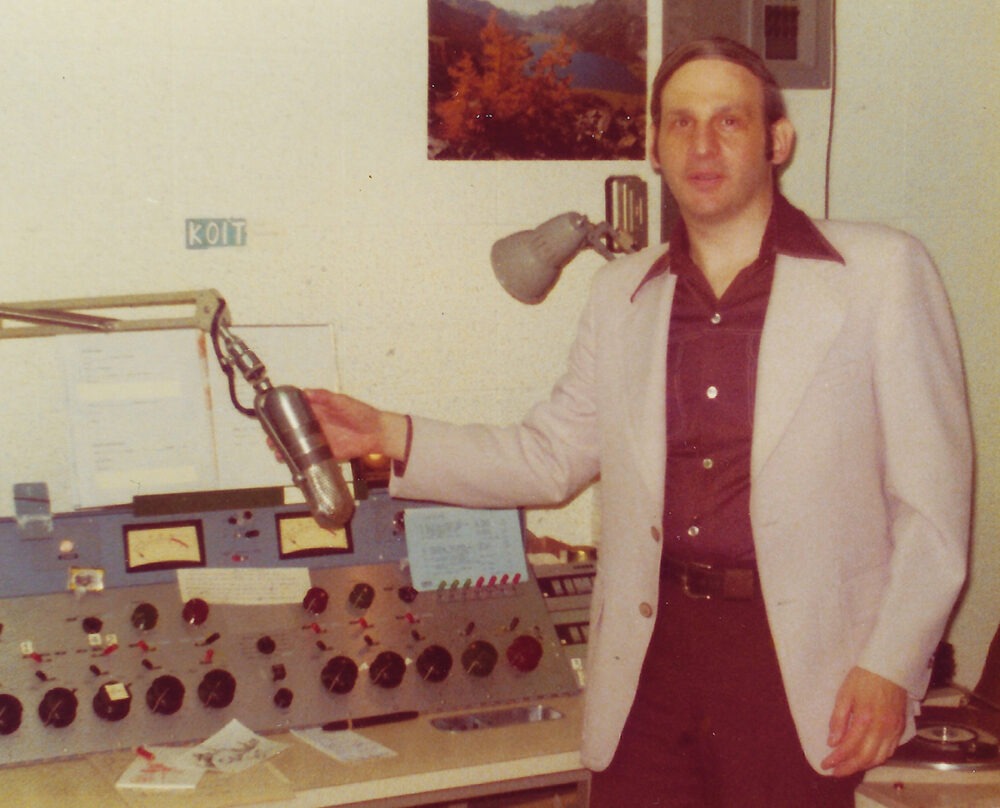
The gentleman here is Fred Seiden and, according to the small sign on the wall, he was in a control room of KOIT in San Francisco, WRFM’s newest sister station, joining the Bonneville family in the summer of 1976. Why exactly Fred is there, I’m not sure, as he was the program director of KBIG in Los Angeles. He was possibly there to provide some guidance and insight to the KOIT air staff. He had been an employee of Radio New York Worldwide, the licensee of WRFM, and its sister international shortwave station, WNYW, prior to my arrival at the stations. Having skills we could use, Fred was brought back in when we needed help in producing the tapes, along with all of the related functions of providing station support, and guidance when the syndication activity was being launched in late 1970.
After I got KBIG up and running in July of 1971, it was obvious the station would never achieve its potential with the team that was in place. After getting back to New York, I hatched a plan to convince the KBIG manager to take on Fred as program director on a six-month trial basis … which he finally acceded to! Fred was the perfect person for the position, as he was very detail-oriented and possessed great insight as to exactly how a station in this format needed to sound. Fortunately, before the six months were up, the general manager retired and a young-and-up-and-comer in the Bonneville family named Joe Dorton was moved to Los Angeles and the two made a perfect team. Sadly, both of these gentlemen left this earth too early.
Bonneville Begins Producing Beautiful Music
By the end of the 1970s, recordings of our kind of arrangements playing the popular songs of the day were no longer being released, either in the U. S. or anywhere else in the world. The only answer was for Bonneville Broadcast Consultants and the other major syndicators in our genre were to begin producing our own recordings in order to keep our programming fresh and relevant with listeners’ tastes. We did that by turning to a group of talented conductor-arrangers who had experience in turning out great orchestral arrangements of popular melodies … some in London, others in Los Angeles. The leader among them was John Fox, who had long worked for the BBC in such a role.
Back in this middle 20th century period, the CTS Recording Studios, which sat adjacent to the famed Wembley Staduim, was a major London recording facility on the par with the acclaimed Abbey Road Studios. It was John’s preferred place to record, even though not particularly convenient to his home, which was to the south of London in Surrey.
On the left is John conducting a session in CTS’s large studio, which was designed for recording soundtracks and could accommodate large symphonic orchestras. While not using as large an ensemble, John insisted on having 35 to 40 players for his sessions, part of the reason I believe his arrangements are still greatly loved today 40 years later. The two gentlemen standing in the other two photos are Dick Lewzey, the CTS recording engineer John preferred to work with, and Vladimir Nikanarov, the highly-skilled audio engineer we had brought on board at Bonneville prior to beginning to rebuild our music tape library. Vladimir had come along with me to this series of sessions as he was not fully satisfied with how the strings sounded on the master recordings I had brought back from a couple of previous sessions.
I don’t now remember what the resolution finally was, whether it was the positioning of the microphones for the violins or an equalization setting Dick was using. However, after a couple of hours of heated discussion, it was agreed that the sessions would go forward following Vlad’s desired approach … which resulted in better sounding strings on all succeeding recordings. Whatever time and dollars were expended, it was worth it as everyone benefited.
On the right … after all the songs had been recorded and the musicians gone home, it was time to mix the multi-track recordings down to the two tracks of stereo. In the chair is John Fox as they discuss the mixing plan. Going forward, Dick would sit at the control board and John off to the side holding the score and shouting instructions – the one I can still hear in my head: “Up celli!”
1990s Satellite Radio
As discussed in my memoir, I retired from Bonneville in the late 1980s, spending much of the 1990s away from the radio industry. However, I was ready to jump back in when satellite radio was being born … being hired as “the old guy to program the old music,” the 1940s/Big Band era channel.
I mention this, as not long ago I discovered the other “long lost” cherished treasure that I had been searching for. Somewhere around 2005, I received an excited call at my desk from Mr. AFDI, Lee Abrams, XM’s programming honcho, saying “get down to Bluesville, Bill Wax’s studio right away, B. B. King wants to meet the person who programs the 40’s Channel!” I was immediately on my way, as I didn’t want to miss this opportunity.
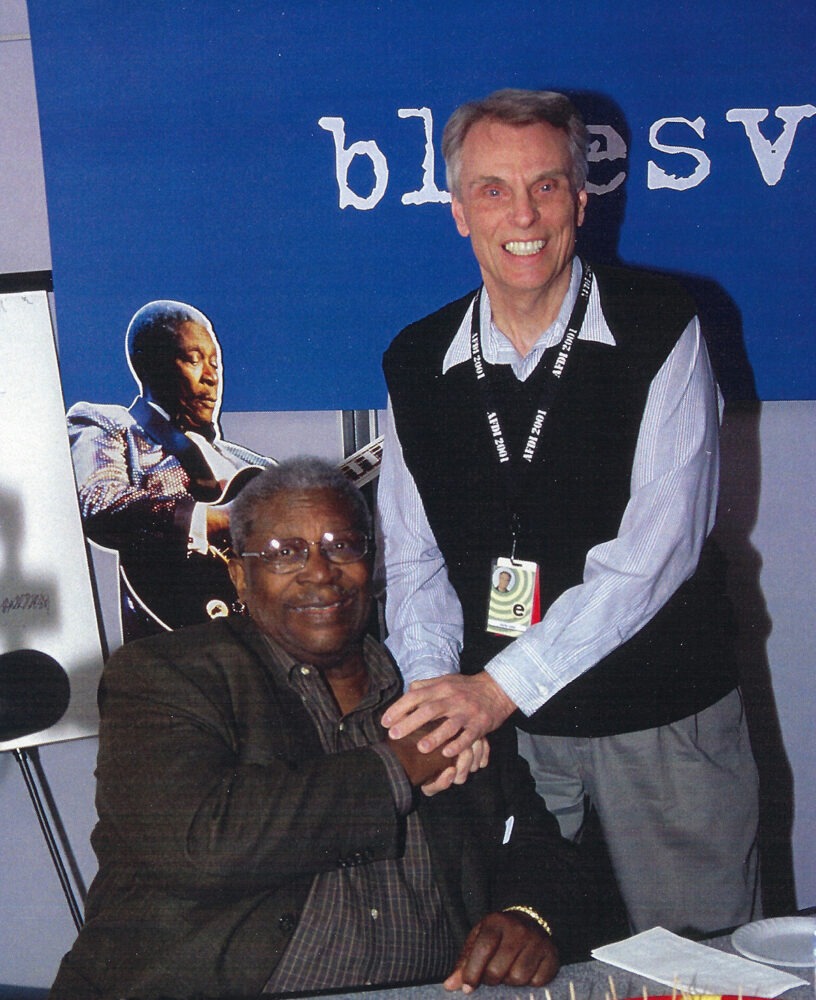
Well, that’s enough for this round … we’ll now close this photo album and wrap up this chapter…
Regardless of what holiday you are celebrating … may you find brightness in this holiday season, in spite of the challenges we all are living with and through!



